This is the story of a Sixers fan who kept cheering for a team that deliberately lost so they could ultimately get back to winning
Photos courtesy of Anton Arellano
It’s a great time to be a Philadelphia 76ers fan.
Five years after the team’s controversial rebuild, dubbed “The Process” began, the losing has paid off. Five years of doubt, scrutiny, and even ridicule have seemingly been erased, and even validated, by the Sixers’ current iteration. How could you not root for a team with young studs like 21-year-old Ben Simmons and 24-year-old Joel Embiid who’ve captivated the NBA with the league’s best feel-good story this year?
Once a team that was barely any different from a G-League—the NBA’s official developmental league—squad, the 76ers now boast of an All-Star, a Rookie of the Year frontrunner, veterans who know how to win, a coach who is now earning respect, and a fanbase that’s learned to #TrustTheProcess.
Once a team that was barely any different from a G-League squad, the Sixers now boast of an All-Star, a Rookie of the Year frontrunner, veterans who know how to win, a coach who is now earning respect, and a fanbase that’s learned to #TrustTheProcess
But it must not have been easy for Sixers fans to have stuck through the rebuilding years, especially when the front office conscientiously made the team worse by shipping away players for future draft picks and cap space—a tactic known as “tanking.” It’s a polarizing rebuilding strategy that has its share of critics and supporters. There are teams that are currently tanking with no clear path to success in sight like the Phoenix Suns and the Orlando Magic.
But tanking has also seen its share of success in teams who have emerged from it as contenders like the 2007-08 Boston Celtics—and its current iteration—the Oklahoma City Thunder (at least before Kevin Durant left), and the last team to have a wave of bandwagon fans in the Golden State Warriors.
Like tanking, bandwagon fans are not new. I’ve written previously on Scout about them and whether or not they’re actually good for the fandom. But regardless of how you feel about bandwagon fans, these same people who rocked Warriors gear when Steph Curry and his team made their ascent to the NBA championship are beginning to wear Sixers merchandise to show they’re now trusting the process, too. But this story isn’t about how the Sixers are the latest hot team to get their own bandwagon.
This story is about a Filipino fan of the Philadelphia 76ers who kept banging the drum in the name of former 76ers general manager Sam Hinkie way before anyone thought it was cool.
***
Now that the Sixers are winning, Hinkie is considered a martyr. Having been fired before Simmons and Embiid turned the Sixers into a contender, Hinkie never saw The Process through—not that it’s anywhere close to being completed at this point.
The guy paying tribute to Sam Hinkie in that jersey is Anton Arellano, a diehard Sixers fan based in the US. He wore that custom jersey at last year’s NBA draft and got considerable attention from the likes of Bleacher Report’s Joon Lee, who tweeted the picture, and J.E. Skeets of NBA TV’s The Starters.
“It certainly draws attention,” Arellano says about the jersey. “Especially among fellow NBA fans.” He isn’t surprised that his jersey went viral during the NBA draft, an event he attends annually. “I’ve been fortunate to have had the access to attend it,” he says. “The draft is like the Victoria’s Secret Fashion Show for basketball nerds. It’s always a fun time to be surrounded by fellow fanatics who you can talk to about the sport, regardless of who they root for or where they come from.”
He beams with pride while talking about the “Hinkie Died For Our Sins” jersey, wearing it as a badge of honor for his fandom—especially since he knows he had it made first. “I’ve been to a couple games and events now where fans have asked to take a picture of or with the jersey,” he recalls. “But the funniest moments are when they tell me about copycats, and how they know it was me who donned it first. Yes, donned it—like a cape or a shield. Can I be called Captain Process or Process Man now?” he jokes.
That’s not even the biggest badge of Sixers fandom Arellano’s gotten. He has a literal one inked on his shoulder.
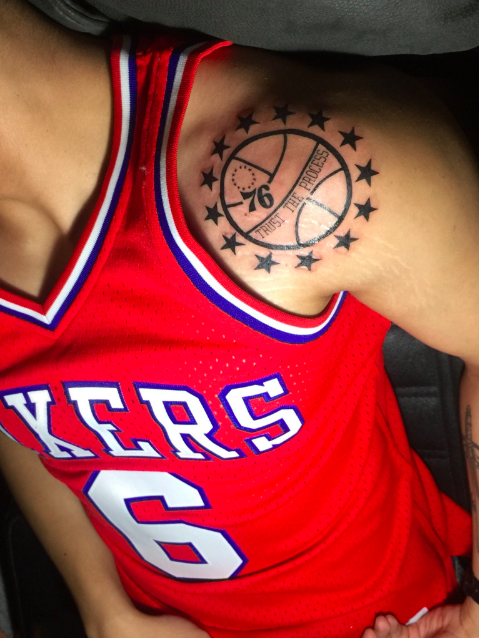
Some folks would tell you that getting a tattoo of the logo of your sports team might not be the best idea. For one, most logos—regardless of organization—are bound to evolve over time while that tattoo’s going to stay on you for the rest of your life. On another note, fandoms can also change, so what happens if you’ve fallen out of love with the team whose logo you had tattooed on you years ago?
“We get designs that bring us back to, or remind us of, certain points in our lives,” he explains. “Getting something Sixers-related was just one of those things that made sense to me. The Trust the Process tattoo represents the crappy seasons (even before The Process) that I underwent as a Sixers fan. Plus, I think trusting the process is a common mindset found in people our age who are still trying to figure things out.”
Having been a Sixers fan for a little over a decade now, Arellano—or Captain Process, if he really wants to go by that now—has seen his fair share of highs and lows following the team.
***
He originally moved to the United States in 2007 and first lived in Delaware, a state that didn’t have its own pro sports teams. To satisfy their sports cravings, fans from that area latched onto teams representing cities in its neighboring states like those in Philadelphia, Washington, D.C., and Baltimore.
During that time, most of the basketball fans he knew were hopping on the Washington Wizards’ bandwagon, when they were still led by former All-Star guard Gilbert Arenas. “I didn’t want to hop on that bandwagon,” he defiantly said. “So I decided to start following the [76ers] team led by the Andre-to-Andre combo [of Andre Iguodala and Andre Miller].”
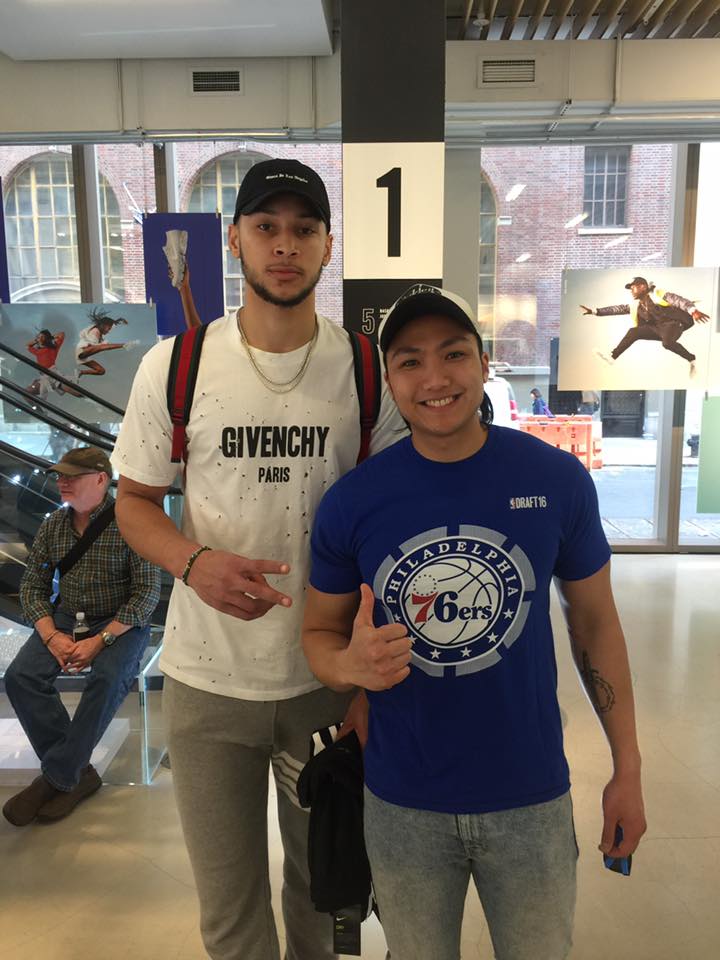
Between 2007 and 2013, the Sixers would make the playoffs four times but never finished with a record better than sixth in the Eastern Conference. Most of that stretch was part of the Andre Iguodala era, but he was never really considered a marquee player like a LeBron James, Dwyane Wade, or Kobe Bryant. “It’s always a feel-good story to see bad or mediocre teams find some scrappy way to win games,” Arellano explains. “The Sixers appealed to me because they somehow did so, and made the playoffs without a clear-cut superstar.”
Arellano eventually moved to Philadelphia and found himself surrounded by what he describes as a “rabid yet passionate fanbase,” one that he identified with. “I’ve always taken sports loyalty seriously, maybe even too seriously,” he reflects. “It was welcoming to have found a fanbase that perceived sports the same way. It certainly helped to see a franchise that welcomes that sort of behavior as well.”
In 2013, Hinkie took over the role of 76ers general manager and traded away point guard Jrue Holiday, who at the time, was considered the face (and future) of the franchise. Arellano was back home in Manila that summer to watch the NBA draft, and was furious to hear about the news. “It probably didn’t help that the draft was in the morning,” he recalls, “So I had shock and outrage for breakfast.” This was the first of a series of moves that Hinkie would pull off in the next few years in his attempt to bring the 76ers back among the upper echelon of NBA teams—the beginning of “The Process.”
“During my entire time in Philadelphia, the team didn’t have much success, not even a single 20-point scorer! So seeing a ballsy effort to finally land the team one or a few players of that elite caliber got me onboard”
“I soon realized what he was trying to do,” explains Arellano. Even though he loved the Iguodala/Miller pairing that led his favorite team when he first followed them, he admits that he also wanted his team to have a superstar player. “I was always jealous of teams that had big names. At that point, the Sixers didn’t have one since Allen Iverson—and I wasn’t even a fan of that team during that era. During my entire time in Philadelphia, the team didn’t have much success, not even a single 20-point scorer! So seeing a ballsy effort to finally land the team one or a few players of that elite caliber got me onboard.” Not long after that, he found himself a fan of Hinkie, the architect of the Sixers’ team of the future.
***
Arellano would meet his hero in 2015. At the time, the Sixers allowed fans who came in early to stand closer to the court during pre-game warm-ups. It was a great way to make the team more accessible to fans since they could interact with the players. Arellano wanted to talk to Sixers center Embiid, who was still injured then, but was being mobbed by the fans. He moved away from the crowd and noticed a man in a suit, standing to the side and observing the warm-ups. It was Hinkie.
“I went up to him,” Arellano begins, “and told him that I was a huge fan of his work, and that I was so grateful to finally see my team hire a general manager with a long-view approach.” He remembers that his interaction with Hinkie was pretty short but meaningful. “I also told him that I believed in what he was trying to accomplish,” he says. “He was very appreciative of those remarks, asked for my name, and we shook hands.” Arellano says Hinkie replied by showing excitement towards the foundation of the team he’d built up to that point, and saying that the best has yet to come.
But while Arellano was supportive of Hinkie’s moves, most coaches, analysts, and fans weren’t as enthusiastic, calling The Process a mockery of the NBA’s system. Others even said it was futile because Hinkie only fostered a losing environment, especially for the younger players he and head coach Brett Brown were drafting and developing.
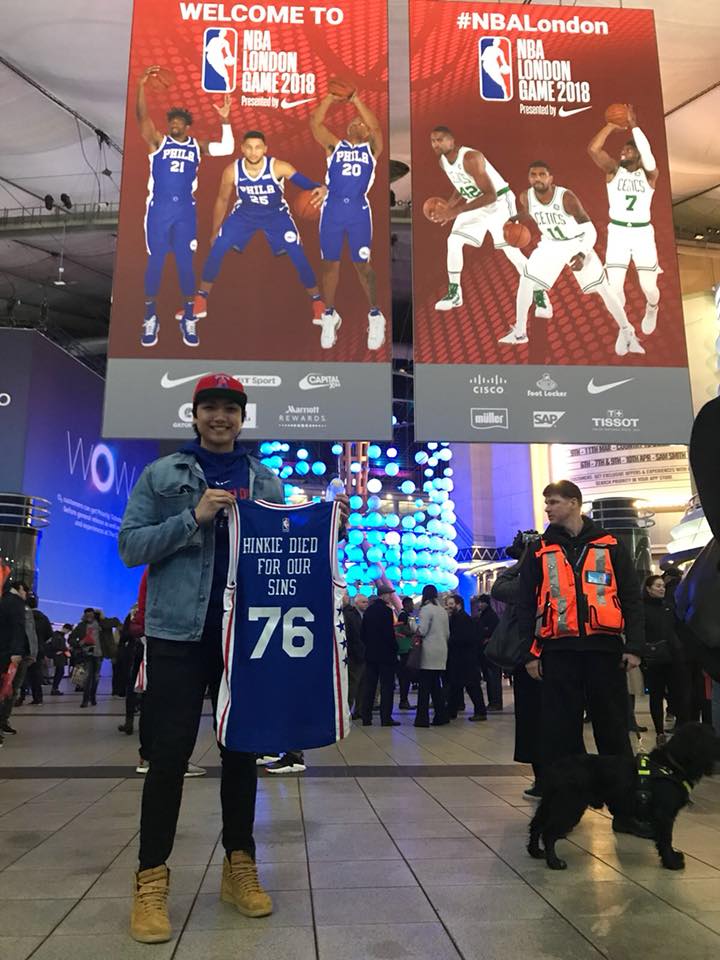
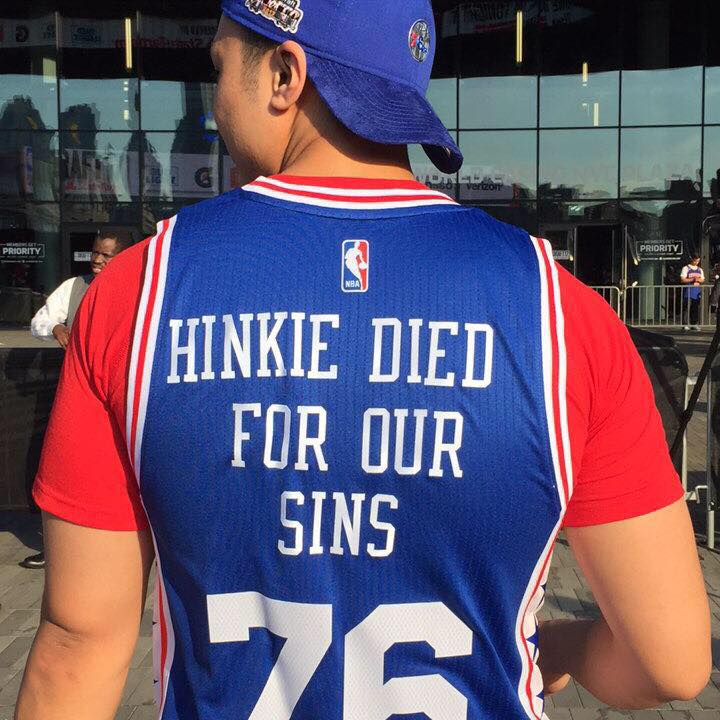
“It’s understandable to be critical of Hinkie,” Arellano concedes. “Most new ideas aren’t always accepted until they prove to be successful.” He’ll tell you today that he won’t blame you for being skeptical or even critical of The Process. “But I definitely won’t hold back in poking fun [at them] while reminding them of how they felt about [The Process] before all the success.”
It’s easy to jump ship whenever times get rough for whatever team you play for. Just look at the politicos who’ve jumped from one party to another through their careers. But for diehard sports fans, nothing is more treacherous than trading in your loyalty to a team for greener pastures. That’s why there was so much backlash hurled LeBron James’ way post-Decision in 2010, and again towards Durant when he became a Warrior two years ago.
For Arellano, who never thought of turning in his Sixers fan card, being part of a community that felt strongly about its sports teams helped him see the beauty in staying loyal to your favorite team. “I also understood the importance of swinging for the fences,” he says. “Especially in a league whose system requires a couple of top-tier players in order for a team to truly contend.”
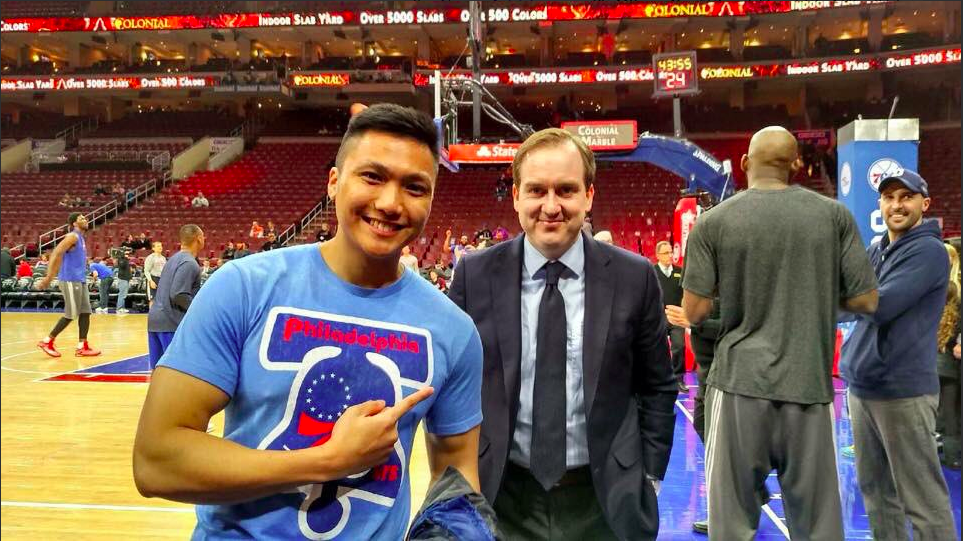
***
Whether or not the Sixers get out of the 3-1 hole they’re in against the Celtics, this season has already been considered a success for them. From winning only 10 games two seasons ago, the Sixers became dark horse contenders to come out of the East heading into the playoffs. And with the team’s young core set to develop as they spend more time with one another on and off the court, things should only get better for their fans, especially those who stuck with them through the losing years.
It’s easy to jump ship whenever times get rough for whatever team you play for. But for diehard sports fans, nothing is more treacherous than trading in your loyalty to a team for greener pastures
“It’s been surreal, man,” Arellano gushes. “This year saw the first ever Super Bowl win for the Philadelphia Eagles [in the NFL], which I may or may not have cried about. And now we’re finally seeing the fruits of The Process begin to ripen! I mean, the core of the Sixers has barely had any professional basketball experience, and they’ve already won 52 games in a season?” He talks about it like even he is surprised, and maybe to a degree, he actually is. After all, faith is something that hinges on possibility, not certainty. But when your faith is proven right, the satisfaction makes it all worth it. “It feels overwhelming,” he says, “to have years of faith rewarded like that. Crazy stuff.”
Now that the Sixers hate has turned into brotherly love, Arellano’s found more people to share his team with—not that he resents it, bandwagon fans be damned. “Getting random messages on social media from people I don’t necessarily talk to on a regular basis,” he says, “whenever something Sixers-related pops up, I enjoy that, man.”
That’s because he looks at his love of basketball as bigger than just fervently supporting one team—custom jerseys and tattoos and all. “That’s what it’s all about,” he affirms. “Engaging with fellow basketball fans and creating a network of people who use sports to take a break from the grind of everyday life.”
Only this time, he gets to say it while supporting a team that’s now actually winning. Anton Arellano trusted the process.
And now, he gets to reap the rewards.